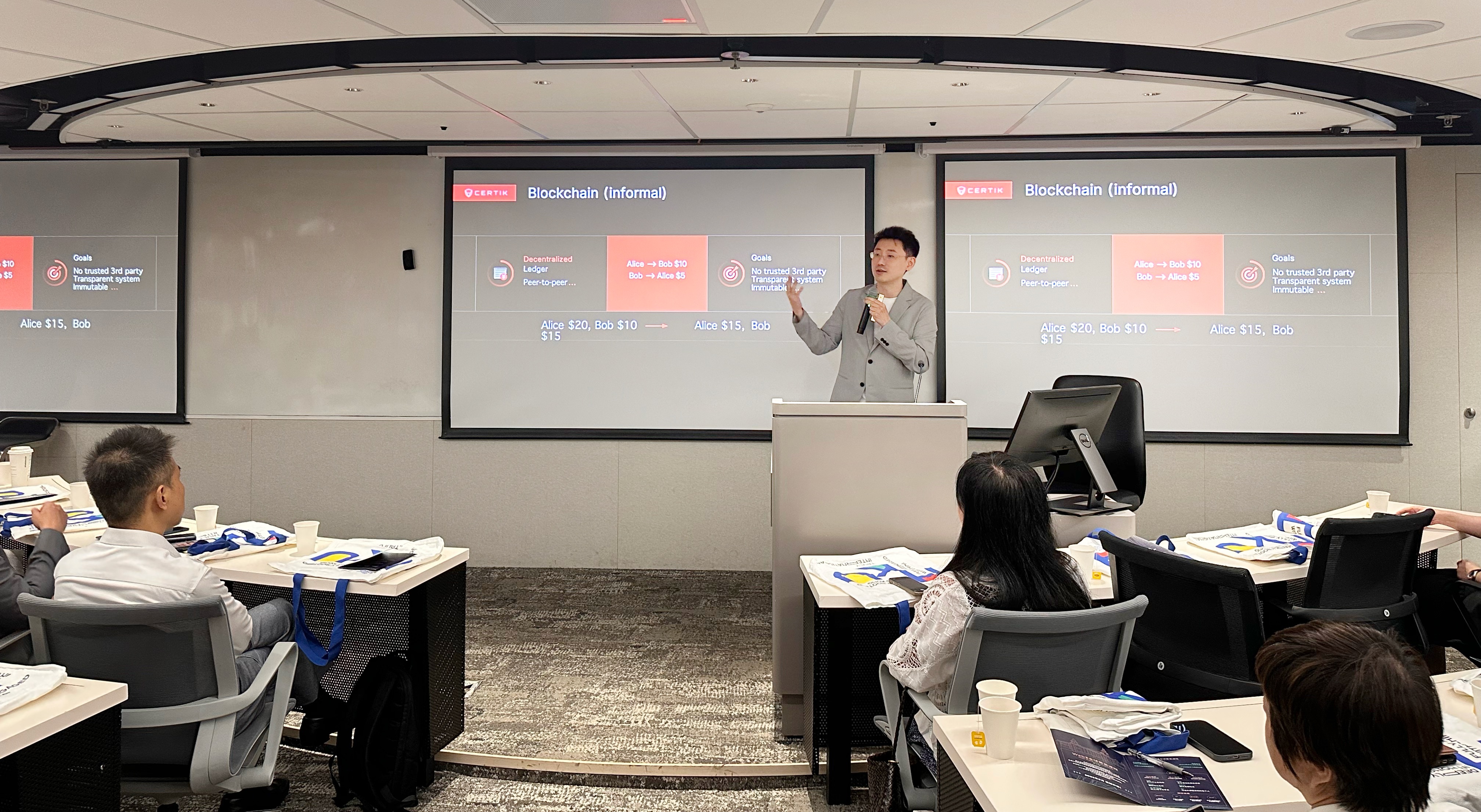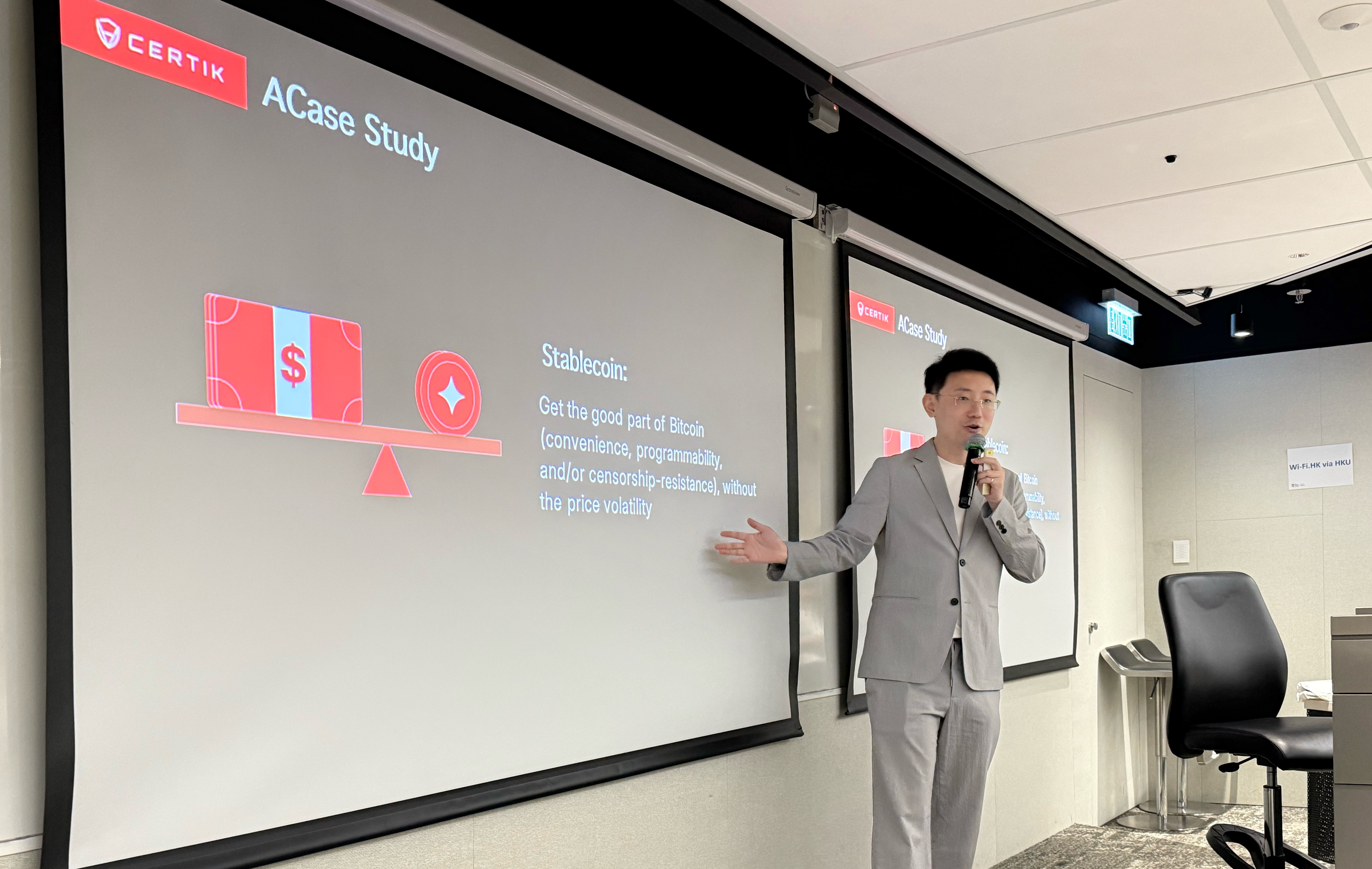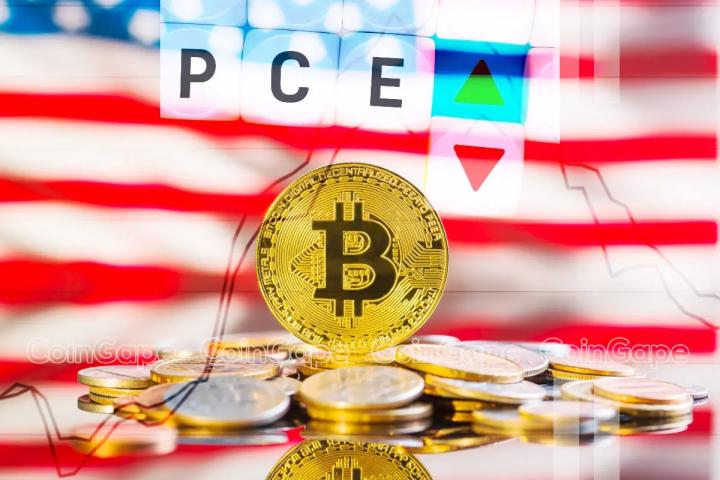
Recently, Professor Gu Ronghui, co-founder and CEO of CertiK from Columbia University, was invited to Hong Kong to participate in the "Global Virtual Asset Outlook" roundtable forum and deliver a keynote speech at the University of Hong Kong Business School, sharing CertiK's technical insights and strategic thinking around security challenges and governance paths in the Web3 era.
On June 27, Professor Gu attended the "Global Virtual Asset Outlook" roundtable forum, engaging in dialogue with the SOL Chief Business Officer, Galaxy Digital's Hong Kong Sales Manager, and HKT Ventures' Chief Strategy Officer to explore the future of tokenized capital markets. The topics covered real-world asset (RWA) on-chain, compliance mechanisms, zero-knowledge technology, and 7x24 hour risk management in tokenized markets, focusing on how to balance innovation and responsibility to drive crypto finance towards mainstream markets.

On June 30, Professor Gu delivered a keynote speech titled "Scaling Web3: Balancing Innovation and Security for Global Audiences" at the University of Hong Kong Business School, attracting numerous students, scholars, and industry professionals. As one of Asia's top business schools, HKU Business School is renowned for its international curriculum and world-class faculty, with its MBA program ranking among the top globally.
Professor Gu pointed out that the global blockchain infrastructure's total market value has exceeded $2.95 trillion, but accompanying risks are escalating: in the first quarter of 2025 alone, the Web3 industry suffered over $1.67 billion in losses due to hacker attacks and vulnerabilities, with Ethereum being the most concentrated target. Wallet hijacking, private key leakage, phishing attacks, and code vulnerabilities continue to upgrade, becoming a critical challenge for the industry to address.
On the technical level, Professor Gu elaborated on the underlying logic of blockchain technology, vividly distinguishing between "blockchain" and "Bitcoin" concepts, and explaining miners' key role in transaction verification and network security, emphasizing the design principles behind blockchain's "immutability" mechanism.

Additionally, he specifically analyzed the multi-dimensional risks faced by stablecoins, including asset risks (such as insufficient reserves and redemption runs), operational risks (like function abuse and anti-money laundering compliance failures), and blockchain infrastructure risks (covering security vulnerabilities in smart contracts, oracles, and public chains themselves). He cited 7 major blockchain network attacks related to stablecoins in recent years, 3 death spiral collapse events caused by mechanism defects, and 14 severe asset de-pegging incidents, warning the industry to be vigilant about stablecoins' systemic hidden dangers.
In response to these challenges, CertiK continues to expand its compliance-centered security service portfolio, from policy risk identification and smart contract auditing to customized risk control assessment and security training, becoming a trusted security partner for Web3 projects with multi-dimensional service capabilities.
From industry trends to underlying technologies, from risk identification to compliance capability building, Professor Gu's sharing in Hong Kong reflects CertiK's systematic thinking and long-term commitment to Web3 security. In the future, CertiK will continue to promote industry stable development from a global perspective, safeguarding the construction of a more secure and trustworthy blockchain ecosystem.







